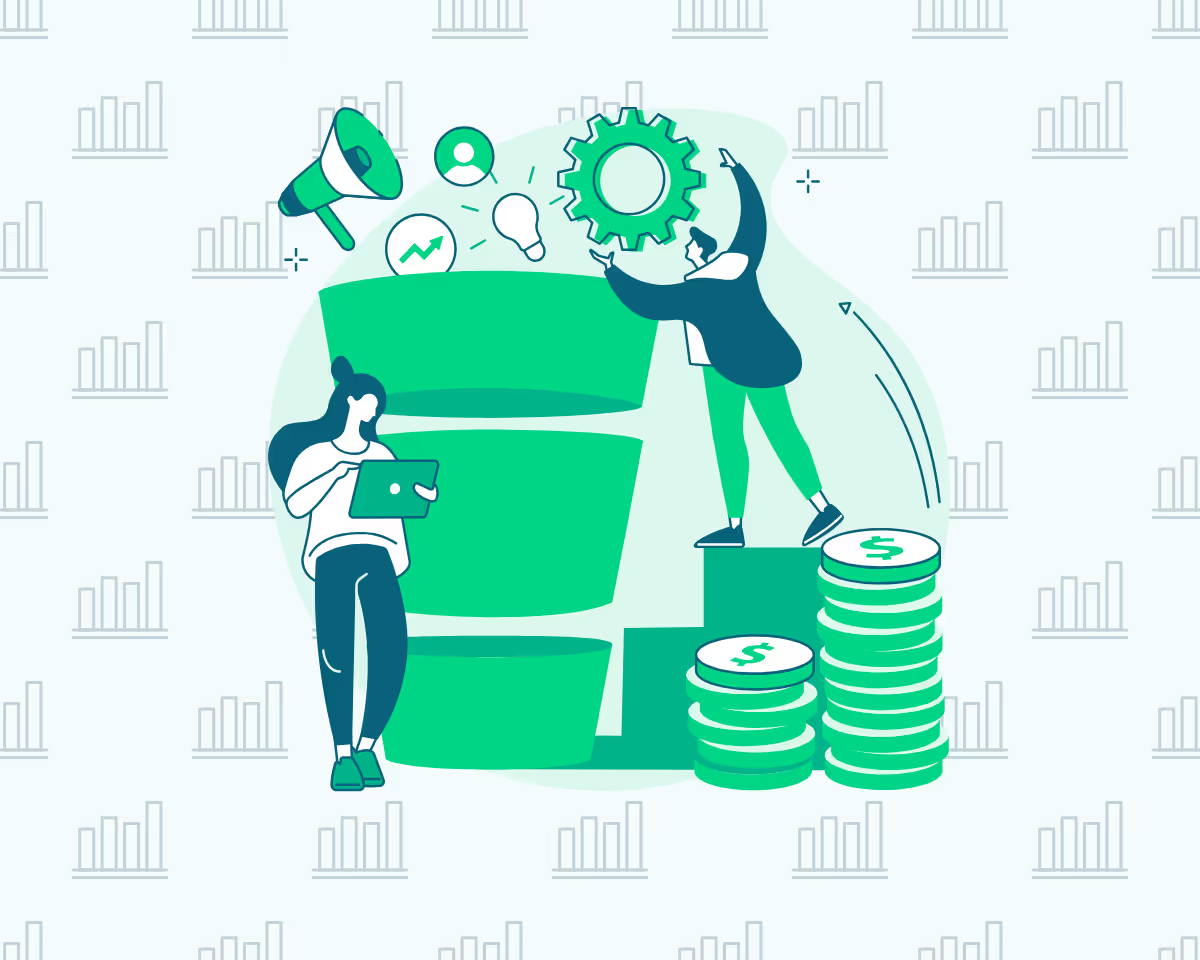Ready to create more pipeline?
Get a demo and discover why thousands of SDR and Sales teams trust LeadIQ to help them build pipeline confidently.



Begin building a sales pipeline forecast by defining specific objectives such as revenue targets, customer acquisition, churn reduction, and sales cycle efficiency to ensure your forecasting efforts are aligned with your overall business strategy.

Collect accurate historical sales data and select a forecasting method that suits your business needs, whether it's based on historical data, current pipeline, or sales cycle length.

Implement purpose-built tools to automate data collection and encourage collaboration across departments to enhance sales forecasting accuracy and improve decision-making.
Get a demo and discover why thousands of SDR and Sales teams trust LeadIQ to help them build pipeline confidently.
To set accurate revenue targets, allocate financial resources effectively, and manage sales performance, SaaS sales teams must have accurate sales pipeline forecasting.
In case you’re unfamiliar, sales pipeline forecasting is the process of predicting future sales revenue by analyzing potential deals and opportunities that already exist in the sales pipeline. Since SaaS revenue is typically generated through subscriptions sourced through inbound and outbound efforts, pipeline forecasting is critical for any organization that wants deeper insights and more control over its finances for budgeting and resource allocation purposes.
Additionally, since SaaS sales cycles are often longer, pipeline forecasting helps sales reps better manage the sales process, identifying bottlenecks to improve conversion rates. Plus, forecasting also helps reps identify potential expansion opportunities within existing accounts, increasing the likelihood of renewals and upsells.
The benefits of B2B sales forecasting speak for themselves. But how exactly do you get started?
To make your job easier, we’ve put together this handy pipeline forecasting guide that covers the seven steps you need to take to build a pipeline forecasting process that can supercharge your sales funnel and help your SaaS business get to the next level.
When building a pipeline forecast, defining clear goals and objectives is critical. Otherwise, how would you be able to tell whether you’re making any progress?
Out of the gate, sales teams should determine what their priorities are. In most cases, you’ll want to focus on things like:
While the above list isn’t comprehensive, it should get you thinking in the right direction.
After setting goals and objectives, sales teams need to gather historical sales data to build a foundation for accurate forecasting.
The data collection process begins with gathering tons of sales information, including sales transactions, lead sources, customer profiles, conversion rates, and sales cycle durations. Once that data has been collected, teams must ensure that it’s complete, accurate, and up-to-date. To do this, they need to clean the data, organize it, combine various sources together, and then normalize it based on factors like seasonality or market fluctuations.
Once the data is collected and prepared, it can be used for forecasting purposes. Generally speaking, the more historical data available, the more reliable the forecast will be.
At this point, it’s time to choose the sales forecasting method that makes the most sense for your unique circumstances. Some popular options include forecasting based on:
After you’ve chosen your method or methods, it’s time to create a forecasting model. This step often involves building an algorithm to analyze data and make predictions about future performance. Some commonly used models include time series analysis, regression analysis, and machine learning algorithms.
Once your model is in place, it’s time to start analyzing the data to identify patterns, trends, and outliers. At the same time, teams should train the model on historical data, enabling it to learn from past patterns, which helps optimize its predictive accuracy. After the model is trained, test it to gauge its performance, and reassess from there.
Remember, the analysis and model development process is often iterative. Over time, your team may need to refine the model, fine-tune parameters, and incorporate new data as you unlock more insights from your analysis.
To streamline processes and improve forecasting accuracy, it’s important to invest in purpose-built tools that can automate repetitive workflows, reduce data-entry errors, and give reps more time to focus on what’s most important.
For example, tools like Gong, Salesloft Forecast, and Outreach can help teams automate data collection, track sales activities, and provide real-time insights into the sales pipeline. As a result, data accuracy improves without any heavy lifting.
Leading solutions are designed to handle the unique complexities of SaaS sales — including subscription renewals, churn rates, and expansion revenue — and they also come equipped with advanced analytics and integrations with popular CRM systems, further improving forecasting capabilities.
Once your tech stack is ironed out, it’s time to encourage your team to collaborate across departments — including sales, customer support, and marketing teams — to paint a more holistic picture of the market and better understand your customer base’s needs and wants.
When teams work together, they bring data from multiple locations to the table, which helps improve forecasting accuracy. Additionally, it also promotes buy-in and ownership from all team members, which makes reps more motivated to achieve their forecasted goals.
Add it all up, and collaborative work helps organizations improve pipeline forecasting, which leads to better decision-making and more favorable business outcomes.
No matter how good your pipeline forecasting game is, you can always improve.
After implementing your forecast, monitor how well it aligns with real-world outcomes and adapt accordingly. By reviewing key performance indicators (KPIs) and comparing results with forecasted figures, teams can identify discrepancies, unexpected outcomes, and areas of improvement. In the event the forecast is consistently off-target, teams may have to adjust the model, data sources, or assumptions.
By remaining agile, open to change, and committed to continuous improvement, sales teams can stay responsive to market dynamics and optimize their sales efforts, setting themselves up for long-term success.
Accurate sales pipeline forecasting is only possible when you have reliable data — and that’s exactly where we can help.
To learn more about what makes LeadIQ’s data more accurate, reliable, and actionable, check out this post from Co-founder and CEO Mei Siauw: The elephant in the room that most B2B data providers don’t want to talk about.